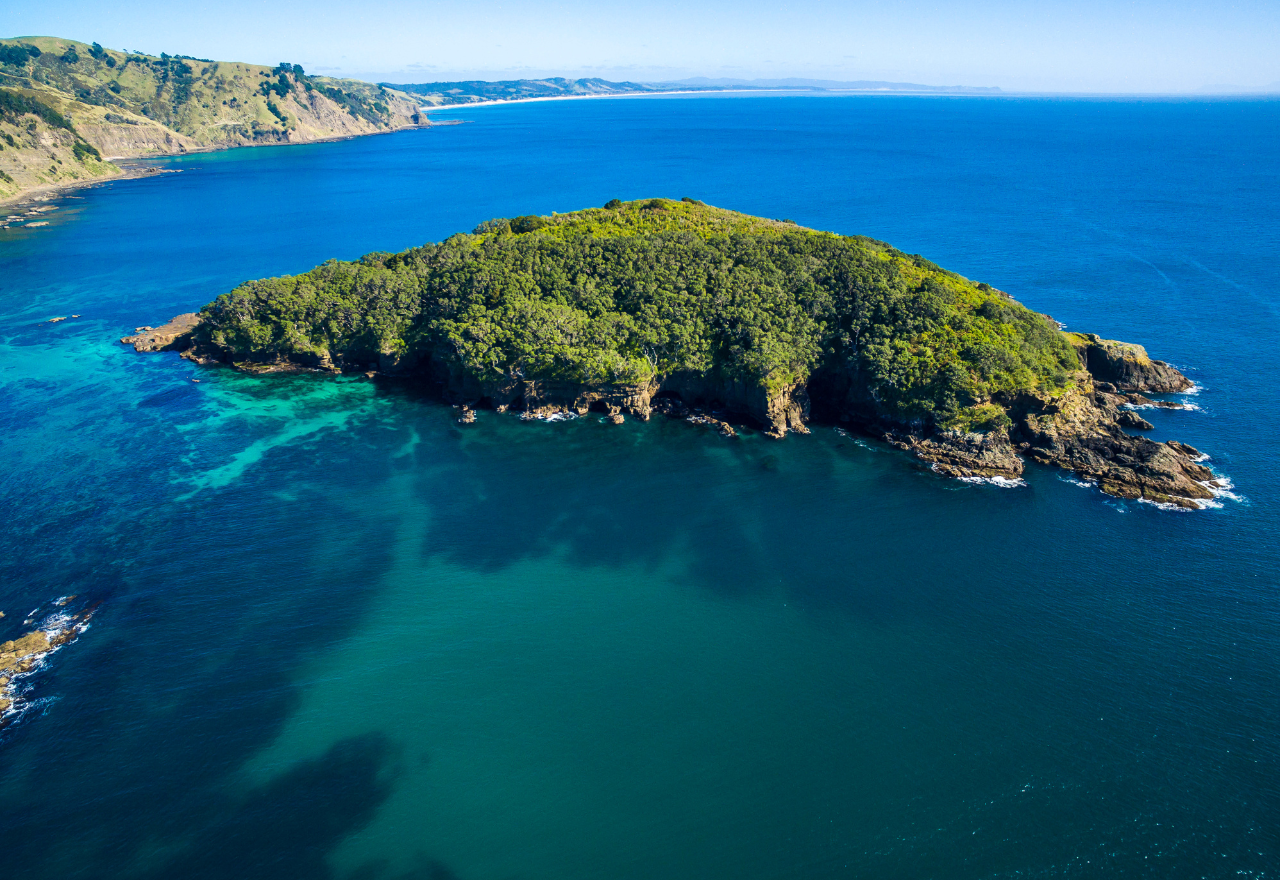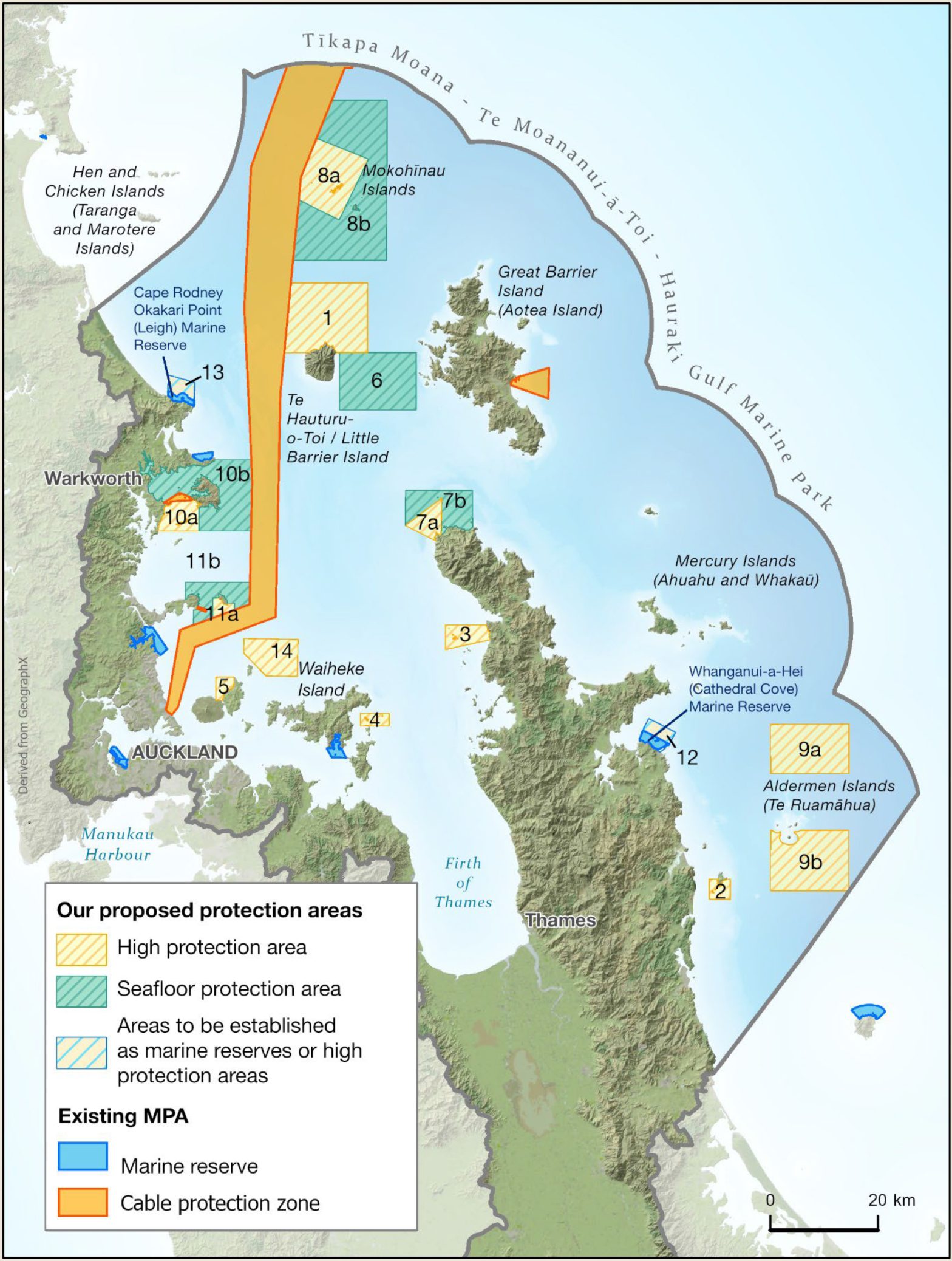Historic new protections for Hauraki Gulf / Tīkapa Moana
08 October 2025, 7:33 PM

The Hauraki Gulf / Tīkapa Moana is entering a new era of marine protection following Parliament’s passing of the Hauraki Gulf / Tīkapa Moana Marine Protection Act this week.
Conservation Minister Tama Potaka described the legislation as a “once-in-a-generation step” to restore the health of one of Aotearoa New Zealand’s most iconic marine environments.
“For years, communities and people across the political divide have despaired at the effects of the Gulf’s long-standing ecological decline, leading to desolate kina barrens and habitat loss,” Mr Potaka said.
“Today, National has delivered the biggest new marine protection area in more than a decade. We’ve nearly tripled marine protection and created 19 new protection areas. In the decades to come, we expect to see fish stocks like tāmure (snapper) and kōura (rock lobster) rebuilding, richer kelp forests, and healthier seabird colonies.”
The new legislation will see the total protected area of the Gulf expand from around 6% to 18%, including the extension of two marine reserves, the creation of 12 new high protection areas, and five new seafloor protection zones.
The Act also marks the 50th anniversary of the world’s first marine reserve — Goat Island / Te Hāwere-a-Maki — which will more than triple in size. Once almost barren, the area is now a thriving marine environment attracting around 350,000 visitors each year.
Mr Potaka said the new measures strike a balance between environmental protection and community needs. “We are establishing high protection areas covering 800 square kilometres while allowing limited local ring-net fishing in just three per cent of the total protected area — a measure that will be reviewed after three years.”
A new team of Department of Conservation (DOC) Marine Rangers has already begun patrolling the Gulf, focusing on public education, compliance, and monitoring the effectiveness of the changes.
The Act builds on more than a decade of consultation that began with the Sea Change Project in 2013, with Mr Potaka acknowledging the work of iwi such as Ngāi Tai ki Tāmaki, the Hauraki Gulf Forum, and environmental advocates.
Environmental groups welcome progress but raise concerns
While conservationists have welcomed the passage of the Bill as a milestone achievement, some remain concerned about last-minute compromises.
Forest & Bird’s National Conservation Advocate, Bianca Ranson, described the legislation as “a hard-won step in the right direction” but said the inclusion of commercial fishing in two high protection areas undermines its intent.
“This Bill represents decades of advocacy and community effort to restore one of Aotearoa’s most treasured marine ecosystems. But allowing commercial fishing in high protection areas turns them into managed fisheries zones and puts short-term industry interests ahead of ecosystem recovery,” Ms Ranson said.
She also criticised the removal of whānau and hapū voices from decision-making, calling it a setback for kaitiakitanga.
“Tīkapa Moana is a taonga — it’s the nursery for our fish, the feeding ground for whales and seabirds, and part of our national identity. If we fail the Gulf, we fail future generations,” she said.
Forest & Bird is calling for stronger protections, including:
- At least 30% of the Gulf to be fully protected by 2030, in line with global biodiversity goals
- An end to destructive fishing methods such as bottom trawling, scallop dredging, and Danish seining
- Stronger measures to tackle land-based pollution and sedimentation
Successive State of the Gulf reports have documented the Gulf’s decline — from the loss of scallop, mussel, and lobster populations to disappearing kelp forests and struggling seabird colonies.
Ms Ranson said the new legislation was “the result of tireless advocacy from mana whenua, environmental groups, scientists, and local communities who refused to stand by and watch the decline of the Gulf.”
“We cannot wait another decade for incremental change,” she said. “The health of the Gulf must come before short-term profit.”
Next steps
The Hauraki Gulf / Tīkapa Moana Marine Protection Act will come into force before the end of the year, with further investment from the International Visitor Levy expected to support its implementation.
For now, conservationists, iwi, and communities alike are watching closely — hopeful that this long-awaited reform will mark the beginning of a true restoration journey for the Hauraki Gulf.




